How Reggie White collided with Boomer Esiason, Michael Jackson, USFL in Tennessee's 1983 Citrus Bowl
The Tennessee football team had already visited Disney World by the time Reggie White arrived a few days late for 1983 Citrus Bowl practices.
He had an excuse.
White, the future Pro Football Hall of Fame member, was one of the most decorated college players that season. So he had to attend a circuit of awards banquets before joining his Vols teammates in Orlando, Florida, where they would play Maryland.
White, the dominant defensive lineman, taped “Bob Hope’s All-America Team” TV show and flew to Florida. His teammates thought he should get the full bowl experience, or perhaps they just wanted to visit Magic Kingdom again.
So they proposed returning to Disney World, and White liked the idea.
“I really wanted to ride Space Mountain,” White told the Baltimore Evening Sun in 1983.
At Disney World, Maryland quarterback Boomer Esiason, another future NFL star, approached White and introduced himself.
“I know I’m going to meet you Saturday, so I might as well meet you now,” Esiason said.
Esiason had no idea how painful their second meeting would be. But that encounter was a key factor in Tennessee beating Maryland 30-23 in the 1983 Citrus Bowl three days later.
Forty years ago, the Citrus Bowl served as a turning point for White, nicknamed the “Minister of Defense,” and the Vols program.
On Jan. 1 (1 p.m. ET, ABC), Tennessee (8-4) will play Iowa (10-3) in the Citrus Bowl at Camping World Stadium.
During the Vols’ first Citrus Bowl trip, White ran into pop star Michael Jackson, crushed Esiason and secretly received a multi-million offer from the USFL during an unforgettable week.
White died in 2004. But News Sentinel archives and other media reports tell his story of the 1983 Citrus Bowl.
When the Vols ran into Michael Jackson by a rollercoaster
In 1983, the Tangerine Bowl was renamed the Citrus Bowl. It was played on Dec. 17, while trying to gain the New Year’s Day prestige that it got later.
Orlando’s massive tourism touted the game as “the best bowl trip in America.” Participating teams visited Disney World, Sea World and Circus World, a now defunct amusement park.
When the Vols were touring those parks during game week, they were surprised to run into the King of Pop.
Jackson had just released his iconic “Thriller” music video two weeks earlier. He was on vacation in Orlando when he ran into the Vols near the wooden rollercoasters at Circus World.
It was a brief meeting. Jackson was surrounded by security and photographers, and his presence had set Orlando abuzz for more than week.
But fame and fortune were just around the corner for White.
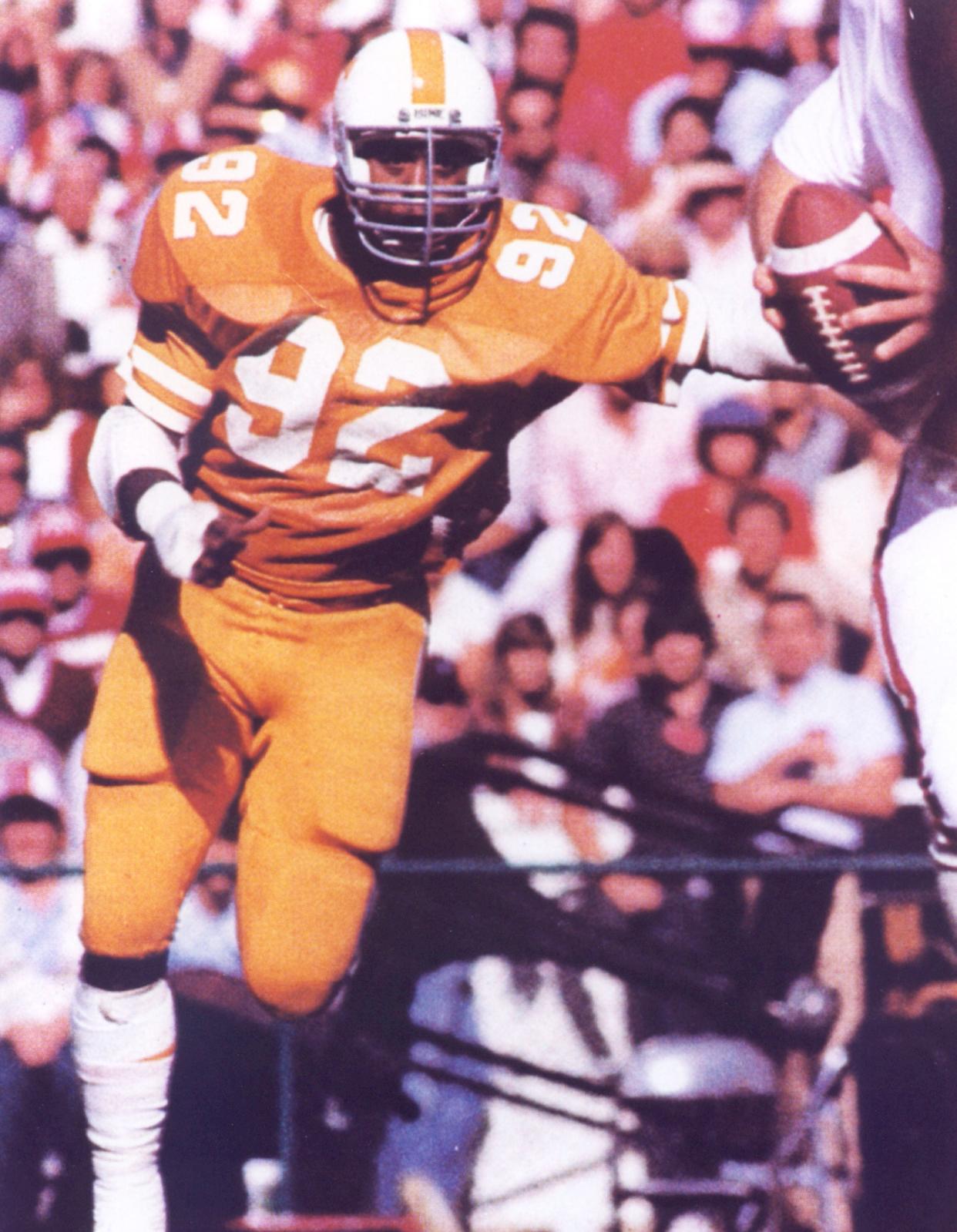
From Knoxville Christmas Parade to ESPN and 700 Club
White had been more of a local celebrity.
Before the Citrus Bowl trip, he was the main attraction at a charity Christmas party for 200 children who lived in Knoxville public housing. One adoring boy asked if he could call White by his first name.
“Only my friends call me Reggie,” White, the 6-foot-5, 264-pounder, said with a smile. “You call me Reggie.”
Then White shared the spotlight with country music singer Chet Atkins at the Knoxville Christmas parade.
Then White squeezed in a press tour to receive his awards. He was a consensus All-American, the Atlanta Touchdown Club Southeast Player of the Year, the Birmingham Quarterback Club Player of the Year, a Lombardi Award finalist and UT’s first SEC Player of the Year since his coach, Johnny Majors, won it in 1956.
And a week after the Citrus Bowl, White, an ordained Baptist minister, appeared on the “700 Club,” a Christian TV show syndicated across the country.
But the Citrus Bowl, one of UT’s few national TV games during White’s career, exposed him to a wider audience.
Just as Tennessee played Maryland on ESPN, the network announced that it had become the most widely watched cable channel in the country with a viewership of 28.5 million households. And ESPN celebrated that milestone with a marathon of its best programming, including several replays of the Citrus Bowl over the holidays.
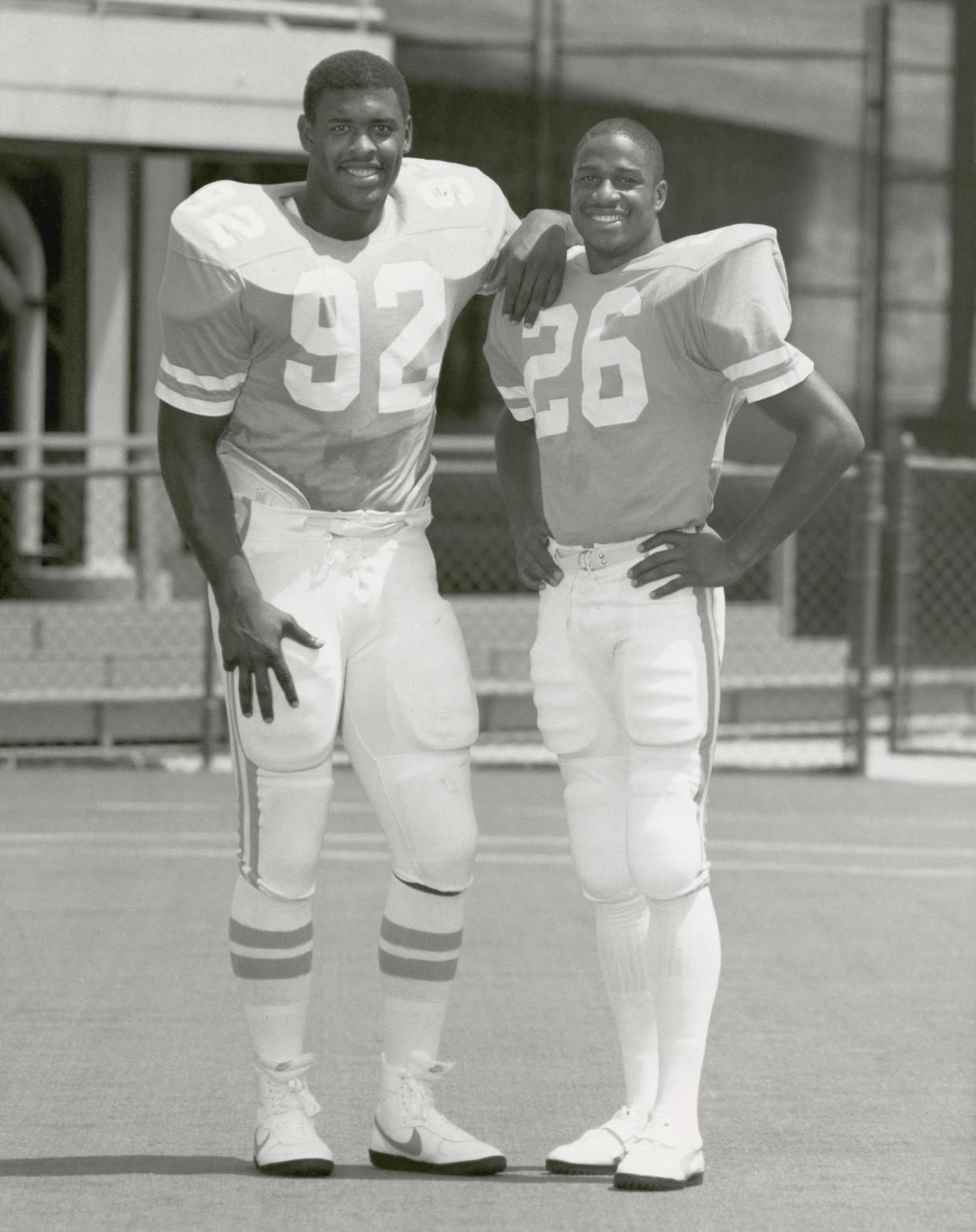
Iowa coach Kirk Ferentz recalls facing Reggie White in bowl
The bowl season brought out the best in White.
As a sophomore, he was the 1981 Garden State Bowl MVP, when UT beat Wisconsin. And he had two sacks and a forced fumble in UT’s loss to Iowa in the 1982 Peach Bowl.
Iowa coach Kirk Ferentz, who will face the Vols in this Citrus Bowl, was the offensive line coach for the 1983 Hawkeyes. He still remembers the dread he felt in preparing his linemen to block White.
But White struggled through ankle injuries his junior season and didn’t reach his potential until that 1983 season. He had a UT single-game record four sacks against The Citadel, three sacks against LSU and two sacks when Tennessee upset No. 11 Alabama.
“I haven’t seen anyone block him yet,” Alabama coach Ray Perkins said.
Maryland offensive tackle Greg Harraka agreed. He was tasked with protecting Esiason from White in the Citrus Bowl.
“(White) is everything they say he is,” Harraka said. “The way he gets down the line is amazing. He’s impossible to stop one-on-one.”
When Reggie White knocked Boomer Esiason out of Citrus Bowl
The Citrus Bowl was supposed to be a clash between Esiason, a play-making quarterback, and White, a dominant pass rusher. But that matchup was short-lived.
In the second quarter, UT was leading 7-6. But Maryland was driving for a potential go-ahead score when Esiason scrambled to his right and away from White. Linebacker Dale Jones hit Esiason first, and then White drove the quarterback into the turf.
“I lay there waiting for Reggie to say something like, ‘Praise the Lord,’ ” Esiason told the News Sentinel. “I was going to say, ‘Hallelujah.’ But he didn’t say anything.”
The hit separated Esiason’s left throwing shoulder, and he never returned to the game.
“I couldn’t throw the ball and wouldn’t have done the team much good,” Esiason told the Associated Press. “What a way to end (my college career).”
The Baltimore Sun had also touted the White vs. Esiason matchup. But its game preview proved prophetic: “Maryland has Boomer Esiason to throw the ball, but Tennessee has Reggie White to throw Boomer Esiason.”
That was White’s 15th sack in 1983, which still stands at UT’s single-season record.
Esiason was replaced by Frank Reich, who later pulled off two of the greatest comebacks in football history.
In 1984, Reich rallied Maryland from a 31-point deficit to beat Miami. And in the NFL, he rallied the Buffalo Bills from a 32-point deficit to beat the Houston Oilers in the 1992 playoffs.
But Reich didn’t have that magic against UT. The Vols beat the Terps behind Johnnie Jones’ 154 yards rushing, Alan Cockrell’s 185 yards passing and linebacker Alvin Toles’ two takeaways.
Secret USFL deal was hatched at Vols bowl practice
While White was teeing off on Esiason, his lucrative pro football future was secretly taking shape on the UT sideline between a future super agent and a fledging USFL franchise.
The Memphis Showboats were preparing for their inaugural season and wanted a homegrown talent. White, a Chattanooga native and UT star, fit the bill.
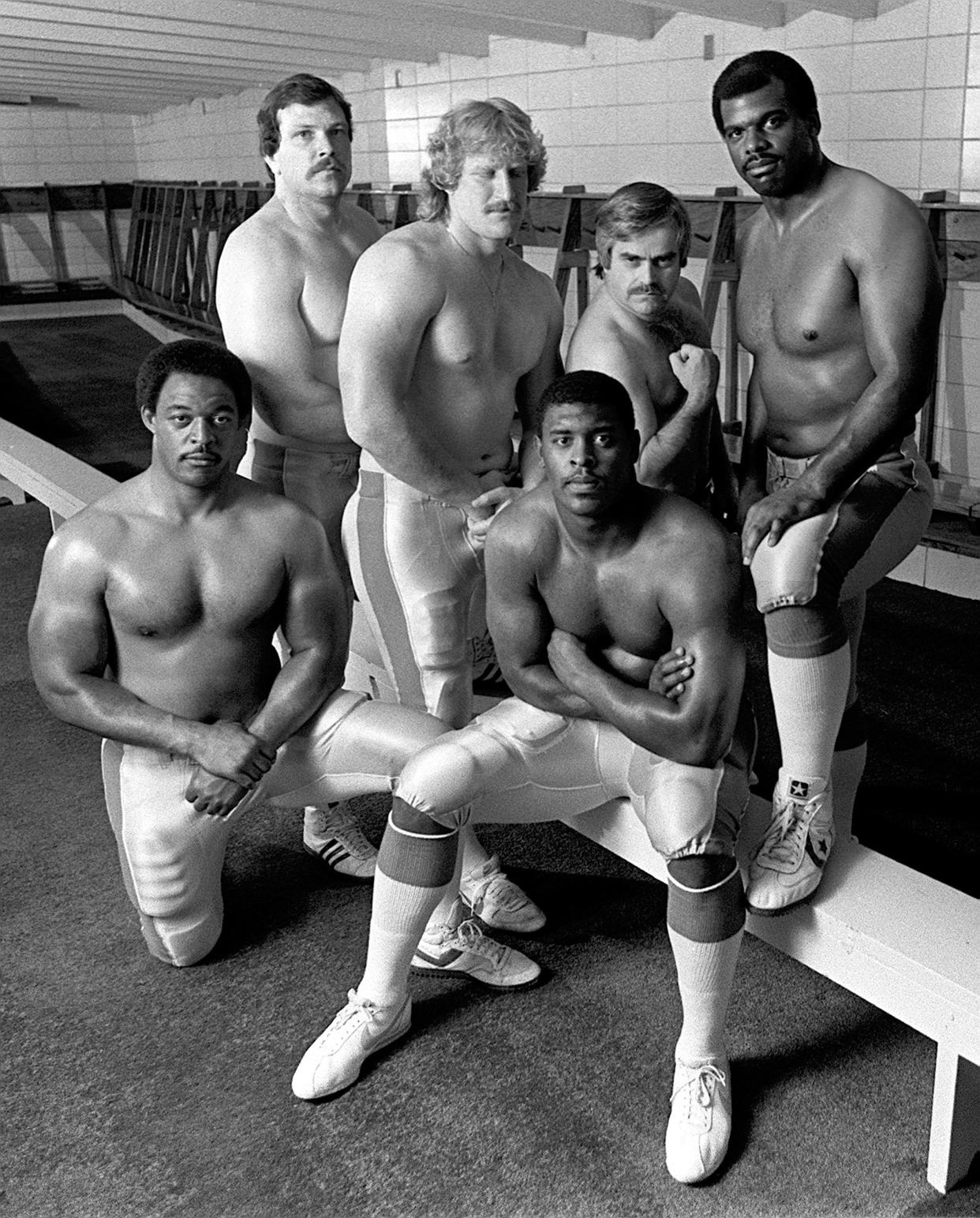
But the NFL also wanted him. So Showboats owner Logan Young and coach Pepper Rodgers traveled to Orlando to sway White.
During bowl practice, which was open to the public, Rodgers and Orlando-based agent Robert Fraley approached Jimmy Sexton, a UT equipment manager and White’s roommate. Sexton, a Memphis native, would later become a super agent and one of the most powerful people in college football.
Rodgers and Fraley wanted Sexton to grease the wheels with White. So they told him about how much they’d pay White to play for the Showboats. Sexton and White discussed it at the team hotel that night.
Two days before the Citrus Bowl, the door cracked open.
“The NFL is not something that I have to play in,” White told the News Sentinel. “I’m interested in the USFL.”
Years later, Sexton told ESPN that during the Citrus Bowl, Rodgers and Fraley handed him a manila envelope that contained a USFL contract for White.
It was a five-year, $4 million contract with a $100,000 signing bonus. The USFL season was in the spring and training camp started in late January, so there was no time to waste.
When Sexton returned to Memphis for the holidays, the Showboats invited him and White to the Liberty Bowl, where Notre Dame beat Doug Flutie’s Boston College squad.
White agreed to come on one condition, that he get a date with singer/actress and newly-crowned Miss America Vanessa Williams, who was singing the national anthem. White and Williams met, but there was no date.
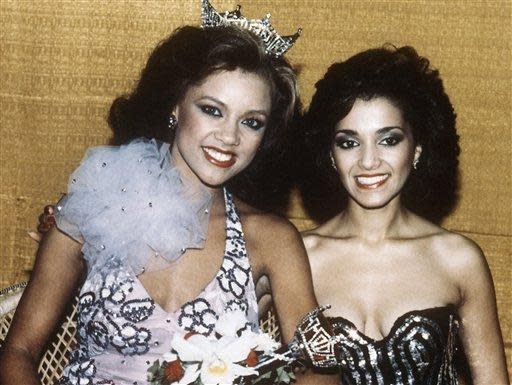
White then went to the Hula Bowl all-star game. The Showboats sent Sexton with him to Hawaii to keep NFL officials and agents away from White.
It was becoming evident that White would be a star in one of the pro football leagues, or ultimately both.
Mel Kiper, Jimmy Sexton started as White mulled pro football
After the Citrus Bowl, White, perhaps sensing his leverage, backed off the USFL just a bit as the NFL prepared its initial pitch.
“I want to wait until the NFL Draft before deciding about the prospects of playing in the USFL,” White said.
NFL Draft coverage was in its infancy in 1984, when White was projected to be selected.
ESPN draft analyst Mel Kiper made his on-air debut that year, bridging an information gap between college players and their pro potential. After all, most NFL fans weren’t as familiar with pro prospects outside their region as they are today.
But NFL scouts knew about White, and they didn’t want to lose him to an inferior league. But the Showboats were several steps ahead, and it paid off.
A month after the Citrus Bowl, White signed that five-year, $4 million contract. Sexton facilitated it, and agent Everett Glenn, who also represented former UT receiver Willie Gault, finalized the deal. They negotiated White’s signing bonus from $100,000 to $550,000.
Bill Parcells wanted Reggie White, Lawrence Taylor with Bill Belichick
There are crazy connections between White and the characters that facilitated his path from the Citrus Bowl to NFL stardom.
Sexton became a super agent for coaches and athletes. He represents 11 of the 14 current SEC coaches, including Nick Saban, Kirby Smart and Lane Kiffin.
The Showboats folded after two seasons, and the NFL’s Philadelphia Eagles paid the remainder of White’s contract. The Eagles had selected him No. 4 overall in the 1984 NFL Supplemental Draft, so they owned his rights.
One pick earlier, New York Giants coach Bill Parcells wanted to select White to pair with future hall-of-fame linebacker Lawrence Taylor under defensive coordinator Bill Belichick for an unimaginable combination.
Parcells' new agent was Fraley, who approached Sexton at the bowl practice representing the Showboats. That gave Parcells an inside track to White.
But in 1983, Parcells was finishing his first season as Giants coach when White was playing in the Citrus Bowl, so he didn’t have much clout in the draft. Years later, Parcells told the NFL Network that he was overruled in the draft room, which is why the Giants picked offensive lineman Gary Zimmerman instead of White.
Bear Bryant, Phillip Fulmer and Payne Stewart linked in more twists
Tennessee had special significance to Fraley long before that 1983 Citrus Bowl.
He was a star quarterback and teammate of future UT coach Phillip Fulmer at Franklin County High in Tennessee, where he was recruited to Alabama by Bear Bryant. In 1974, Fraley was a fourth-string quarterback when Alabama played the Vols in Knoxville.
The first three quarterbacks were injured, so Fraley got his chance in his home state. He led Alabama to a 28-6 win and lit up a victory cigar in the locker room to celebrate the biggest moment of his playing career.
In 1999, Fraley died in the same plane crash that killed PGA golfer Payne Stewart, his client and neighbor in Orlando.
That meant Parcells needed a new agent, and he hired Sexton.
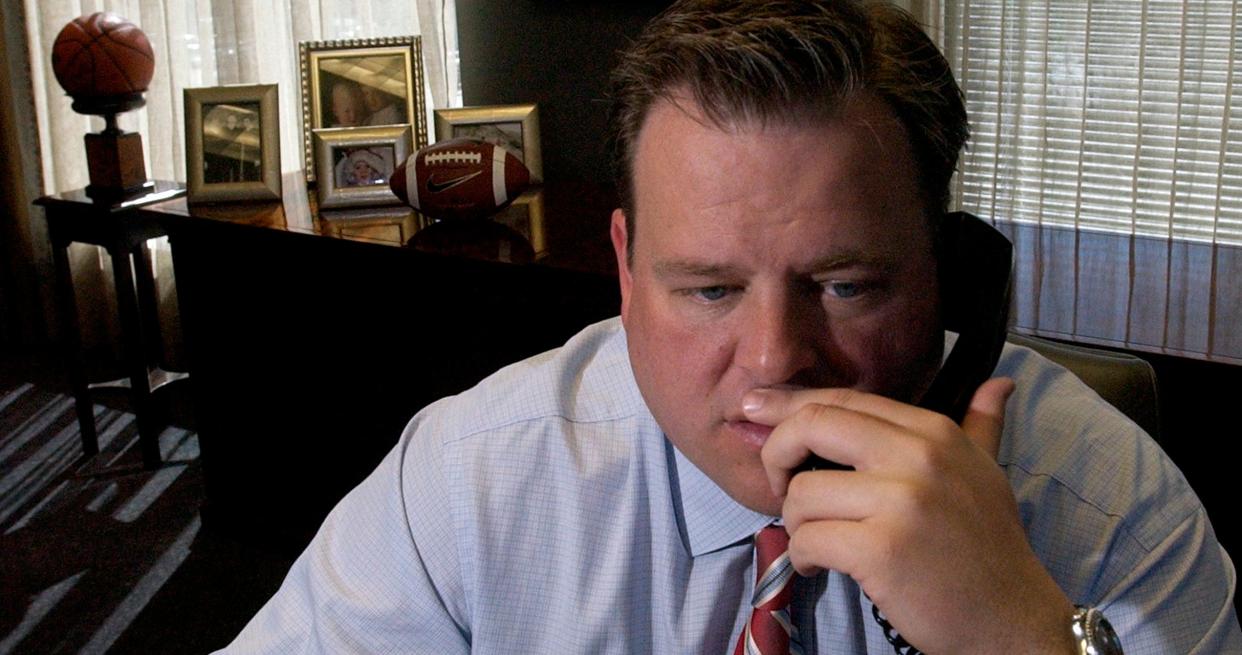
In life and death, White connected to Citrus Bowl
Sexton, as White’s agent, spearheaded the blockbuster deal that got his former UT roommate to the Packers in 1993. White won a Super Bowl three years later.
White retired in 2000 as the NFL’s all-time sack leader. He was a 13-time Pro Bowler, eight-time All-Pro and two-time NFL Defensive Player of the Year.
White, 43, died of a cardiac arrhythmia in 2004. Tennessee retired his No. 92 in 2005. And he was posthumously inducted into the Pro Football Hall of Fame in 2006.
Throughout his career, White held true to his faith and charity work. He said it was a higher priority than football, and that was evident all the way back to that crazy week in Orlando.
“I’m not holding back. I’m hoping I can start a ministry with the money I could get from pro ball,” White said at the 1983 Citrus Bowl. “I do the best I can. It’s in Colossians 3:23. It says, ‘Whatever you go, do it heartily, as to God, not to man.’
“And I feel God has given me the ability to be a football player.”
Adam Sparks is the Tennessee football beat reporter. Email adam.sparks@knoxnews.com. X, formerly known as Twitter@AdamSparks. Support strong local journalism by subscribing atknoxnews.com/subscribe.
Get the latest news and insight on SEC football by subscribing to the SEC Unfiltered newsletter, delivered straight to your inbox.
This article originally appeared on Knoxville News Sentinel: How Reggie White collided with Boomer Esiason, Michael Jackson, USFL in Tennessee's 1983 Citrus Bowl
